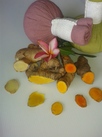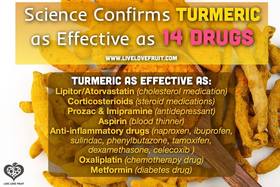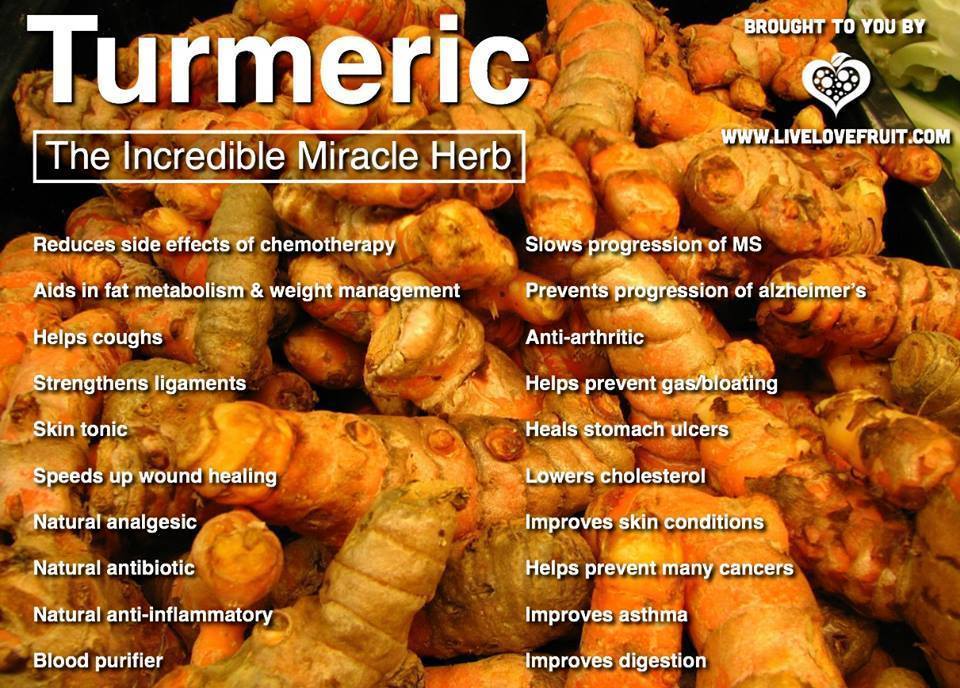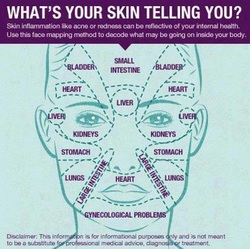 Turmeric Ginger & Co.
Turmeric Ginger & Co. LPK is exceptional effective, generally a few treatments show substantial improvements and reversal of painful conditions, range of motion limitations, for other various ailments.
We use only fresh sourced, Thai medicinal Herbs which have superior healing power versus dried ones.
 effective as 14 Drugs
effective as 14 Drugs This rhizome has been traditionally used as a remedy for inflammatory conditions like arthritis, osteoarthritis, and rheumatoid arthritis. Plenty of evidence from research has shown that the potency of turmeric’s anti-inflammatory and anti-arthritic effects have been equated with that of the popular pharmaceutical anti-inflammatory drugs like Motrin and hydrocortisone (but without the nasty side effects and toxicity of these isolated drugs). A daily dosage of curcumin was found to be more effective in easing post-surgical inflammation as the regular anti-inflammatory prescriptions.
Curcumin has the ability to inhibit the activity of enzymes COX-2 and lipoxygenase, which contributes to turmerics amazing anti-inflammatory properties.
from Healthy Diary.com:
- 1. It is a natural antiseptic and antibacterial agent, useful in disinfecting cuts and burns.
2. When combined with cauliflower, it has shown to prevent prostate cancer and stop the growth of existing prostate cancer.
3. Prevented breast cancer from spreading to the lungs in mice.
4. May prevent melanoma and cause existing melanoma cells to commit suicide.
5. Reduces the risk of childhood leukemia.
6. Is a natural liver detoxifier.
7. May prevent and slow the progression of Alzheimer's disease by removing amyloyd plaque buildup in the brain.
8. May prevent metastases from occurring in many different forms of cancer.
9. It is a potent natural anti-inflammatory that works as well as many anti-inflammatory drugs but without the side effects.
10. Has shown promise in slowing the progression of multiple sclerosis in mice.
11. Is a natural painkiller and cox-2 inhibitor.
12. May aid in fat metabolism and help in weight management.
13. Has long been used in Chinese medicine as a treatment for depression.
14. Because of its anti-inflammatory properties, it is a natural treatment for arthritis and rheumatoid arthritis.
15. Boosts the effects of chemo drug paclitaxel and reduces its side effects.
16. Promising studies are underway on the effects of turmeric on pancreatic cancer.
17. Studies are ongoing in the positive effects of turmeric on multiple myeloma.
18. Has been shown to stop the growth of new blood vessels in tumors.
19. Speeds up wound healing and assists in remodeling of damaged skin.
20. May help in the treatment of psoriasis and other inflammatory skin conditions.
- Curcumin seems to delay liver damage that can eventually lead to cirrhosis, according to preliminary experimental research at the Medical University Graz in Austria.
- Kansas State University research found that adding certain spices, including turmeric, can reduce the levels of heterocyclic amines -- carcinogenic compounds that are formed when meats are barbecued, boiled or fried -- by up to 40 percent.
- Rodent studies at the University of Texas indicate that curcumin inhibits the growth of a skin cancer, melanoma and also slows the spread of breast cancer into the lungs.
- Researchers from the University of South Dakota have found that pretreatment with curcumin makes cancer cells more vulnerable to chemo and radiotherapy.
- Epidemiologists have hypothesized that the turmeric that is part of daily curries eaten in India may help explain the low rate of Alzheimer's disease in that country. Among people aged 70 to 79, the rate is less than one-quarter that of the United States.
- And at least one new study suggests curcumin's value for arthritis treatment. Since arthritis is so common and the results so interesting, it's worth a closer look.
Turmeric Tea Ingredients:
- 1 cup Coconut Milk (or almond)
- ½ tspn Cinnamon
- ½ tspn Turmeric
- 1/8 tspn Nutmeg
- Dash of Cayenne Pepper
- Raw honey to taste
Tom Kha Gai
is a popular Thai Chicken Coconut-milk soup we like to add Turmeric and Mushrooms like Wood Ear, Oyster other to it tastes great and benefits you Health and Well being.
more research and info:
http://www.herbs-info.com/turmeric.html
http://www.greenmedinfo.com/blog/600-reasons-turmeric-may-be-worlds-most-important-herb
http://www.healthy-holistic-living.com/turmeric-tea.html#ixzz2avbJOJ49



 RSS Feed
RSS Feed
